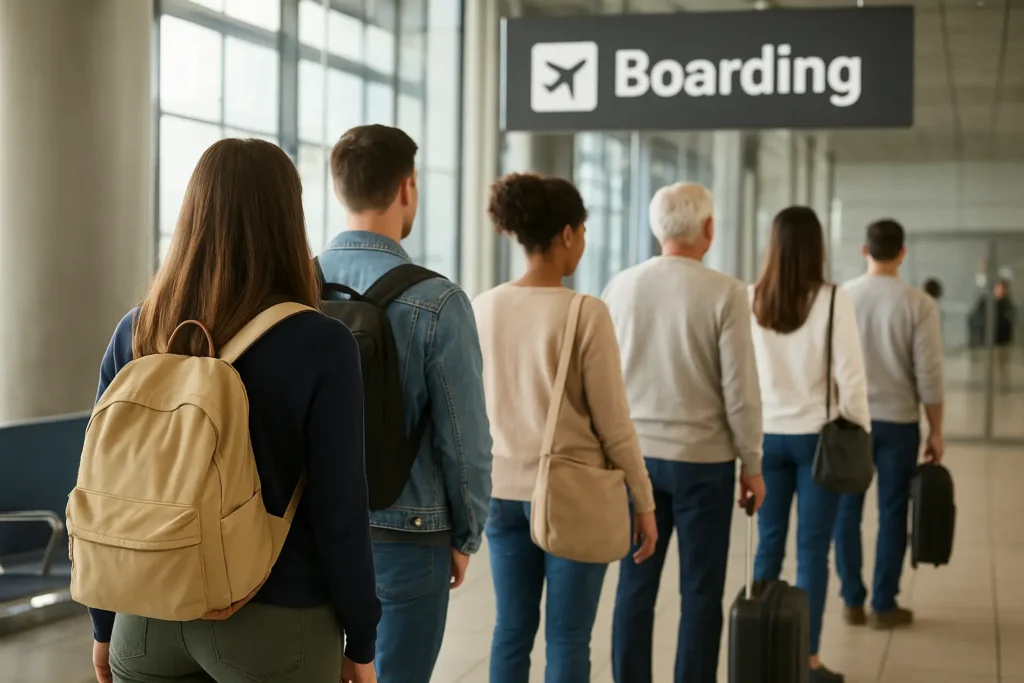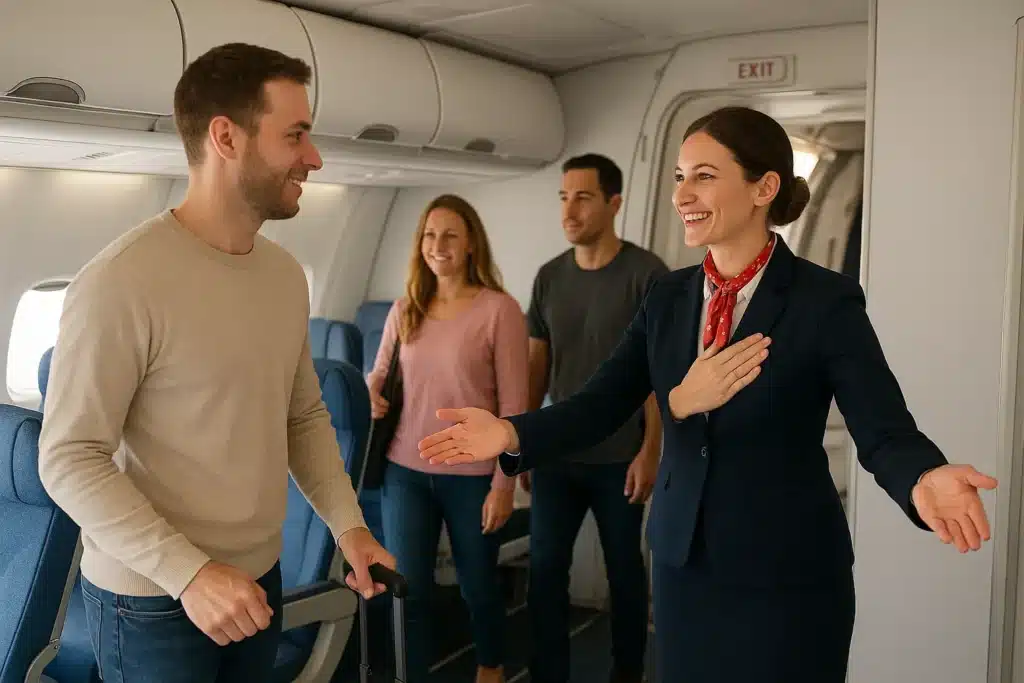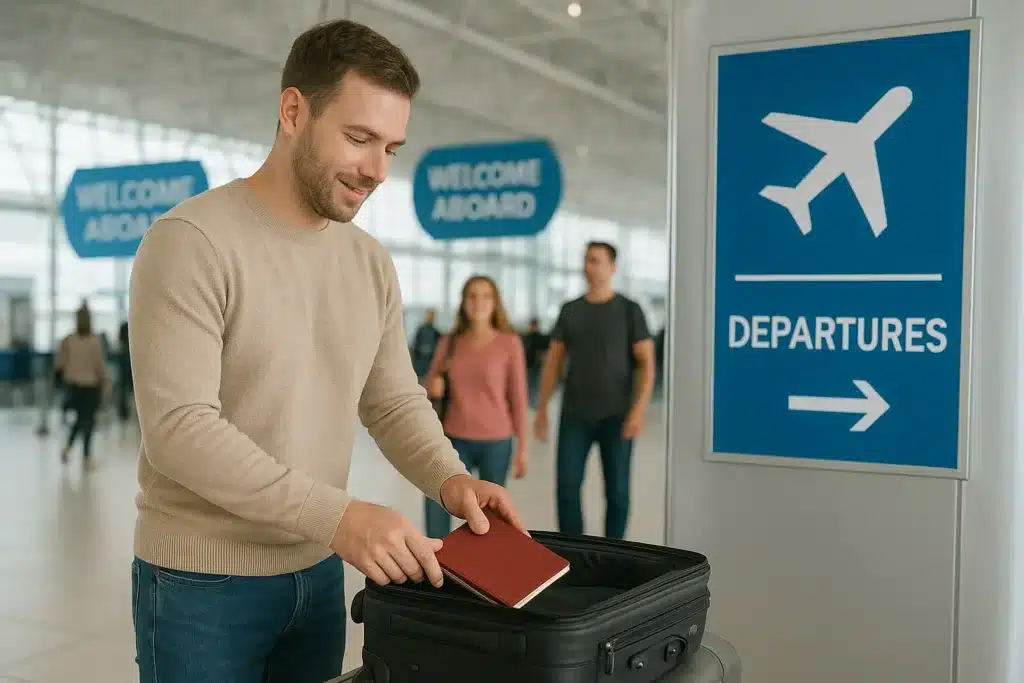
Introduction to Flying Etiquette
Air travel is one of the most convenient ways to connect with the world, yet it’s also an environment where personal space, patience, and manners are tested like nowhere else. Flying etiquette isn’t just about following rules; it’s about being considerate of others while maintaining comfort and harmony in a shared space. Whether you’re heading on a business trip, a vacation, or visiting family, practicing good manners ensures that both you and those around you enjoy a smoother journey from start to finish.
Good etiquette starts long before takeoff—it begins at home with packing and continues through the airport, in the air, and even while disembarking. It’s about small gestures that make a big difference: respecting lines, controlling noise, and showing gratitude to the crew who make air travel possible.
Preparing Before You Fly
Preparation is the foundation of a stress-free flight. Begin by packing smart—take only what you need and ensure your carry-on fits within airline size limits. Overpacking can cause inconvenience at the gate or lead to arguments over overhead bin space. Include essentials like headphones, snacks, chargers, and personal hygiene items to make your flight comfortable.
It’s equally important to understand your airline’s policies. Every carrier has its own baggage allowances, check-in procedures, and seat selection rules. Review these details online before heading to the airport. Arrive at least two hours early for domestic flights and three hours for international travel to allow enough time for check-in, security, and boarding.
Good preparation also means checking your documents—make sure your ID, boarding pass, and any necessary visas or vaccination certificates are ready. A well-prepared traveler not only saves time but also helps airport operations run smoothly for everyone.
Airport Etiquette
The airport experience sets the tone for the entire journey. One of the most important aspects of airport etiquette is patience. Lines at check-in and security can be long, but losing your temper doesn’t make them move faster. Instead, stay calm, organized, and ready when it’s your turn.
At the security checkpoint, remove metal items, belts, and laptops promptly to keep the line moving. If you’re traveling with children or pets, organize their belongings ahead of time to minimize delays. When you reach the boarding area, respect boarding announcements and group numbers. Avoid crowding near the gate before your group is called—this only causes congestion and frustration.
In lounges or waiting areas, be mindful of space. Don’t occupy extra seats with luggage, and keep phone conversations at a moderate volume. Your awareness and patience contribute to a more relaxed atmosphere for everyone.
Onboard Courtesy and Shared Space
Once you step inside the airplane, remember that it’s a shared environment—courtesy and awareness become essential. Airplane cabins are tight, and personal space is limited, so being considerate goes a long way.
When seated, recline your seat carefully, checking behind you before doing so. The middle seat passenger often gets both armrests—it’s an unwritten but widely accepted rule of flying. Keep your items stowed properly under the seat or in the overhead bin to avoid cluttering the aisles.
Noise is another major factor in onboard comfort. Always use headphones when watching videos or listening to music, and keep your volume low enough that others can’t hear it. Avoid loud conversations, especially during early morning or overnight flights.
Lastly, respect the crew’s instructions at all times. Flight attendants are trained professionals ensuring everyone’s safety. Treat them with politeness and patience—they’re balancing the comfort of hundreds of passengers at once.
Food, Hygiene, and Comfort Etiquette
Flying often involves close proximity with strangers for several hours, making hygiene and food choices critical. Before boarding, avoid strong perfumes, colognes, or heavily scented lotions, as these can cause discomfort for others, especially in a confined cabin.
If you bring food on board, choose items that are tidy and odor-free—think sandwiches or dry snacks instead of fast food or spicy dishes. Always clean up after yourself and dispose of trash properly. Keeping your area neat helps the cabin crew and shows respect for the next traveler who’ll sit in that seat.
It’s also considerate to maintain basic hygiene during the flight. Wash your hands frequently, especially before meals. If you need to move around, do so gently and avoid disturbing sleeping passengers. Small gestures like covering your mouth when coughing or sneezing show awareness and empathy.
Deplaning Gracefully
The moment the plane lands, patience is once again tested. Many passengers rush to stand up as soon as the seatbelt sign turns off, but rushing the aisle is unnecessary and inconsiderate. Wait for your row to clear before retrieving your luggage, and move calmly toward the exit.
Always thank the crew as you leave. They’ve worked hard to ensure your safety and comfort, often under challenging conditions. A quick “thank you” or smile goes a long way and helps create a culture of appreciation in the skies.
Deplaning etiquette isn’t just about leaving in order—it’s about maintaining a positive attitude even when tired. Your final actions on the plane leave a lasting impression, both on the crew and your fellow travelers.
Common Flying Mistakes to Avoid
Even seasoned travelers can make etiquette errors. Some of the most common include ignoring seatbelt signs, overindulging in alcohol, blocking aisles during boarding, or using strong fragrances in flight. Others include reclining too abruptly, talking loudly, or removing shoes and socks during the flight.
Avoiding these mistakes doesn’t just make you a more pleasant passenger—it can prevent conflicts and ensure smoother interactions with both crew and travelers. When in doubt, apply the golden rule of flying: behave the way you’d want others to behave toward you.
Flying with Children and Pets
Traveling with kids or pets requires extra care and consideration. For children, pack quiet entertainment like coloring books, tablets, or small toys. Snacks, water, and comfort items like a blanket or stuffed animal can help keep them calm. If your child becomes upset, remain patient and do your best to soothe them—most passengers understand.
For pets, ensure their carriers meet airline regulations and are comfortable, clean, and secure. Feed and walk your pet before the flight to reduce stress. Always clean up after your pet and keep them inside their carrier throughout the journey.
Being prepared and respectful when traveling with little ones or animals helps make the experience enjoyable for everyone on board.
Global Flying Etiquette
Air travel crosses borders, so it’s helpful to be aware of cultural differences. What’s polite in one country may be unusual in another. For example, while small talk with strangers is common on U.S. flights, it might be less welcome in certain European or Asian cultures.
Understanding local customs can make your travels smoother. Learn basic greetings, respect personal space, and observe how locals behave at airports. Cultural sensitivity isn’t just good manners—it’s a sign of respect for the diverse world of travelers sharing the skies with you.
Conclusion: The Golden Rule of Air Travel
Ultimately, flying etiquette boils down to one timeless principle: treat others the way you’d like to be treated. Patience, respect, and self-awareness are the cornerstones of courteous travel. Whether it’s giving space to others, listening to crew instructions, or showing gratitude during the flight, these small actions create a ripple effect of kindness across the cabin.
By following these simple yet powerful etiquette rules, you’ll not only make your journey more comfortable but also contribute to a more pleasant travel experience for everyone—from takeoff to touchdown.
For additional air travel insights, visit Travel + Leisure.